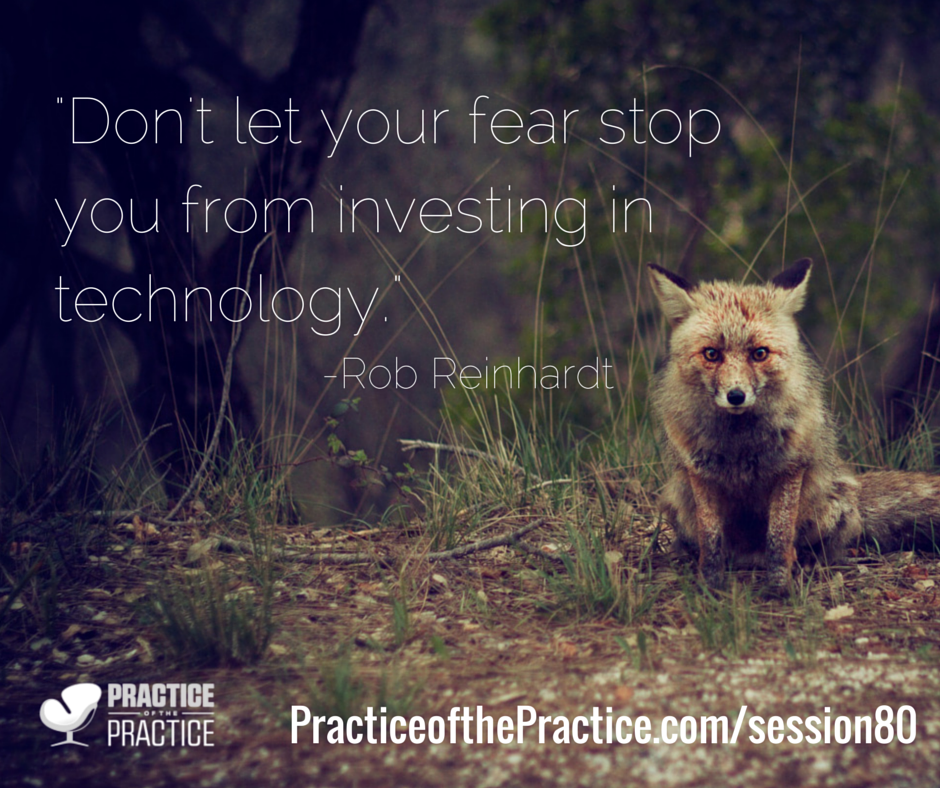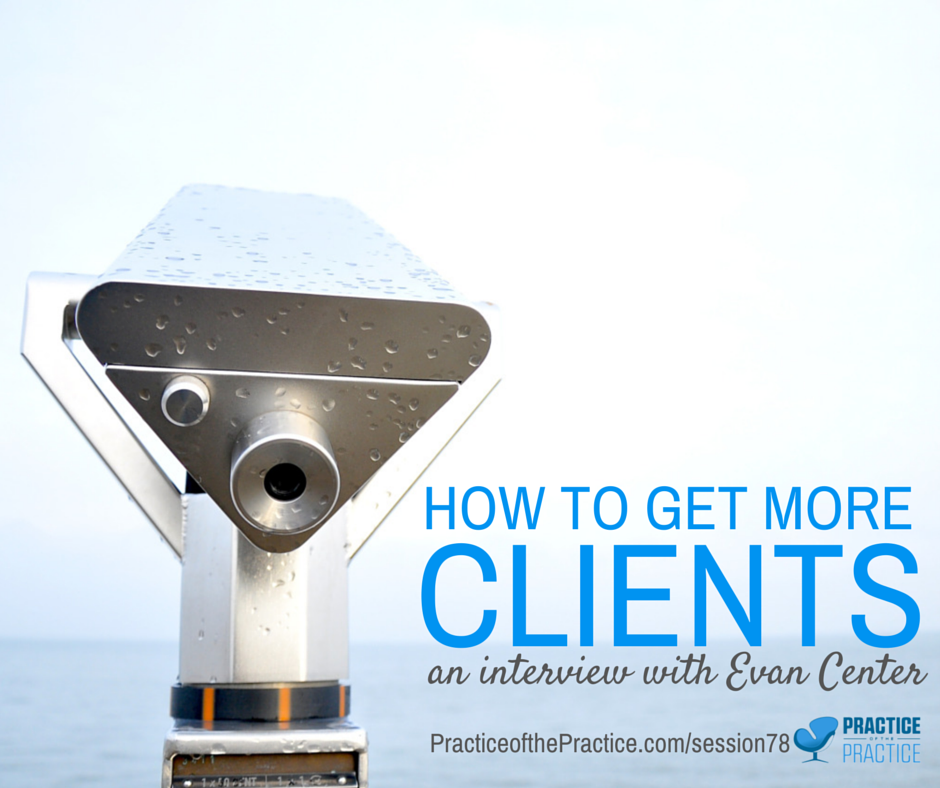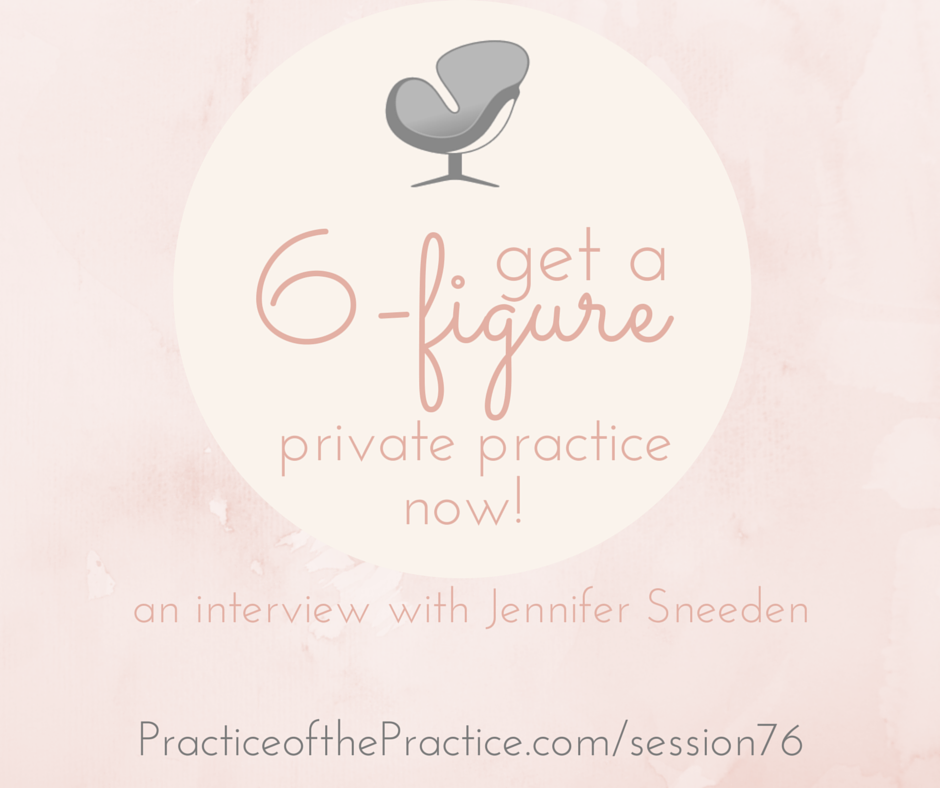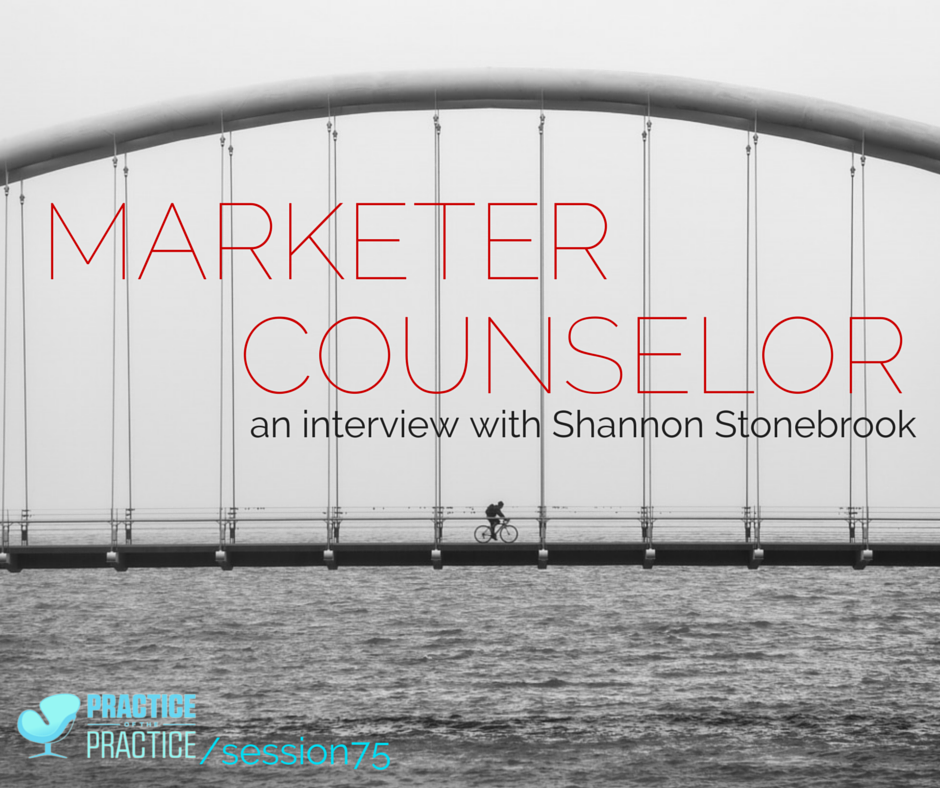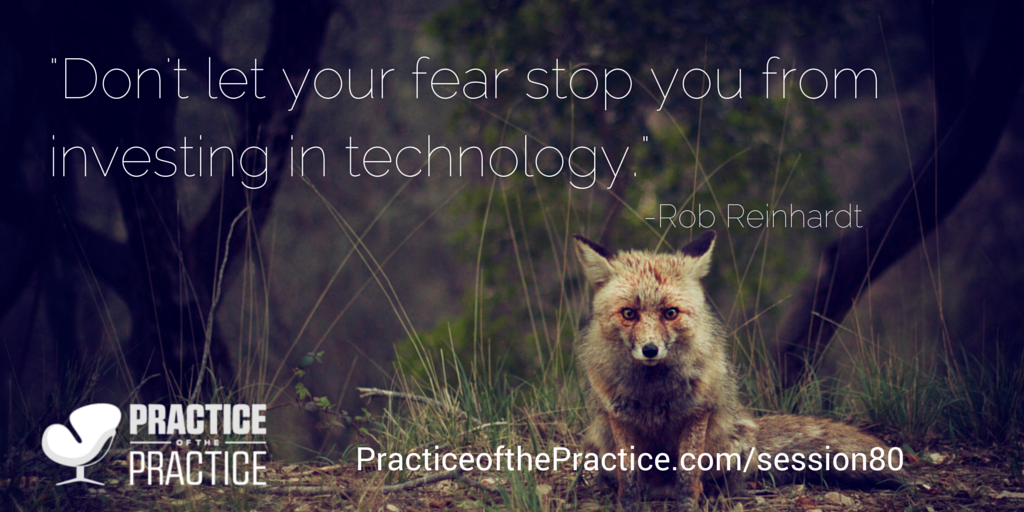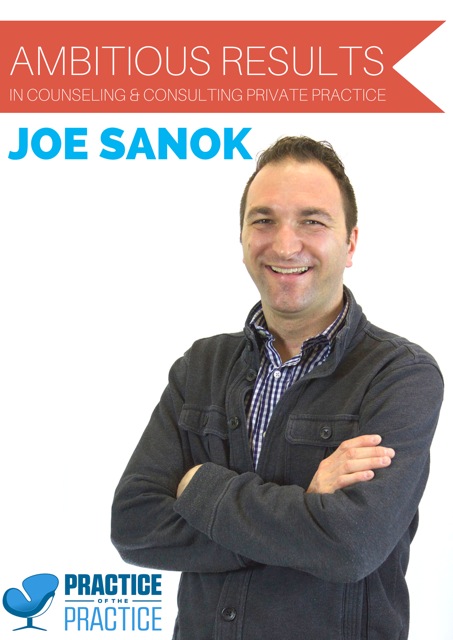Podcast: Play in new window | Download | Embed
Discover ways to grow a private practice using technology in this private practice consultant interview with Rob Reinhardt!
![]()
Today’s Private Practice Podcast Sponsor
If you want to build your strength and endurance, you can do repetitive physical exercises like running or walking. Similarly, to improve a specific cognitive skill like attention, you can perform a repetitive mental exercise and reap the benefits over time.
Muse is the mental equivalent of a treadmill, which helps you exercise your brain with focused attention training. It improves your attention by training you to become aware of your distractions quicker and react faster to regain focus on what you’re doing.
Here’s my unboxing of the Muse:
What you will discover in this podcast
4:02 Rob’s great breakout session and the unexpected turns in his story
12:05 How to use board games in therapy
18:21 The one thing you are doing wrong when you Google your name
22:05 How to send secure emails with clients
31:02 What every counselor in America needs to know
Private Practice Resources Mentioned
Here’s the link to Rob’s KickStarter for the Describe Cards.
PoP Culture Meet Rob Reinhardt
 Rob Reinhardt, LPCS, M.Ed., NCC runs a successful counseling private practice and has extensive Information Technology and Business Administration experience. Custom business models result in success. Bringing a comprehensive mix of experience to the table, Rob adapts business plans and technologies to different needs. He can address all facets of your practice, Marketing, Technology and Business. Whether you need focused help in one area of your business, or a comprehensive consultation, Rob will help you craft a plan that fits your goals and philosophy.
Rob Reinhardt, LPCS, M.Ed., NCC runs a successful counseling private practice and has extensive Information Technology and Business Administration experience. Custom business models result in success. Bringing a comprehensive mix of experience to the table, Rob adapts business plans and technologies to different needs. He can address all facets of your practice, Marketing, Technology and Business. Whether you need focused help in one area of your business, or a comprehensive consultation, Rob will help you craft a plan that fits your goals and philosophy.
Podcasts you may have missed
Music From The Podcast
Silence is Sexy
madelyniris
For your social media
Joseph R. Sanok, MA, LLP, LPC, NCC
Joe Sanok is an ambitious results expert. He is a private practice business consultant and counselor that helps small businesses and counselors in private practice to increase revenue and have more fun! He helps owners with website design, vision, growth, and using their time to create income through being a private practice consultant.
Joe was frustrated with his lack of business and marketing skills when he left graduate school. He loved helping people through counseling, but felt that often people couldn’t find him. Over the past few years he has grown his skills, income, and ability to lead others, while still maintaining an active private practice in Traverse City, MI.
To link to Joe’s Google+ .
Here is the Transcription of This Podcast
Technology and Private Practice An Interview with Rob Reinhardt
This is the Practice of the Practice Podcast with Joe Sanok, Session 80. I’m Joe Sanok, your host. Well, hello everybody. I hope you are doing awesome today. This is Joe Sanok. I have my very first in-studio audience member, Mary Rogers. She didn’t know I was going to say that. She’s live here in the studio with me, and she’s just hanging out watching me do this. She’s going to be doing some really cool work that I’ll tell you about once she makes it go live. But she’s just observing the process.
How are you doing today Mary? Live studio audience. Well, you know what’s really funny is it really actually ties in really well today. I think it was Zig Ziglar that was — he said, “When you help other people reach their goals, it’s a lot easier to reach your own goals” or something along those lines. It’s not an exact quote but basically, if you help other people out, you’re going be successful.
A number of years ago, Mary had me on her show. It was the Mary in the Morning Show. Now, she’s doing all sorts of other really cool stuff. But she really helped me launch my career and it’s funny how that now comes back. That exact same thing kind is happening with Rob Reinhardt who’s my guest today on the show.
Rob and I were hanging out down at the American Counseling Association conference in March of 2015 and he let me interview him. We were talking and just a really cool guy. He’d done some breakout sessions, talks a lot about technology. He has partnered with Roy Huggins quite a bit who you guys have known because he’s one of my only two time guests on the podcast. Rob and I were just chatting and as we chatted, he was talking about this thing that he has called these describe cards. Rob sent me a pack of these describe cards and they’re these super cool little cards that have just all sorts of different things on them. It has like different emotions like happy and different questions you can use with clients.
As he sent these to me, at first, I didn’t know how it was going to look, but they are so cool and he is doing a kick starter campaign right now and those are going to be in the show notes so you can help support him. I did a live video for him but it’s just so cool when you start partnering with people, when you start helping other people reach their goals, how they then in turn oftentimes, help you reach your goals.
Don’t be scared of partnering with people. So, often I meet counselors in private practice that feel like if they partner with people and give away their secrets that somehow like they’re not going to be as successful. Like that’s just such an old mentality. Don’t worry about partnering. In fact, it’s probably going to help you grow even faster because Rob is getting my name out there in ways and to audience, members that maybe never heard of me.
So, do it. Go with partner with people. Also, I wanted to just let you know that today’s sponsor is Muse. Muse is this awesome just biofeedback headband that I’ve been using to help myself in my own meditation and also, I’ve been using it with clients. It’s just awesome. You plug it into this app or it does Blue Tooth with this app. It then shows your brain waves and gives you immediate feedback and it’s super awesome. I’ll have a link to that in the show notes, as well.
So, Rob is with us today. He’s going to be talking about technology, he’s going to be talking about describe cards, he’s going to be talking about all sorts of different things that you’re going to discover and I’m so excited for you to meet him. He runs a successful counseling private practice and has extensive information on IT, business administration and all sorts of other experience. He does custom business models, as well. He brings a comprehensive mix of experience to the table and adapts business plans and technologies to different private practice needs. He also does consulting with people and he’s not been on the podcast before so without any further ado, I give you Rob Reinhardt.
Joe Sanok: Well Rob Reinhardt, from tameyourpractice.com, welcome to the Practice of the Practice Podcast.
RH: Good to see you, Joe.
Rob’s great breakout session and the unexpected turns in his story
Joe Sanok: Yeah, yeah. This has been a really great conference and you had a great breakout session and why don’t you just kind of start with your story like how’d you end up in the niche that you’re in and take us through that.
RH: Well, I’ll try and give you a short version.
Joe Sanok: Yeah.
Cross-talk
RH: Yeah. I mean, I graduated from University of Florida about a million years ago with my psychology degree and we all know how useful a bachelor’s in psychology is. And from there, I kind of wandered about many different realms. I played a year of semi-professional football, I was in video production, I worked in restaurants, both waiting tables and in management.
About 1996, that’s when the internet was really taken off and consumers were like what? We can be on the internet and do all these cool things? I had always had a technology background. We had a home computer in our house when I was like 10 years old because my mom worked for Honeywell and the people who aren’t familiar with Honeywell they did a lot of stuff for the space shuttle and things like that.
I’m like, “Hey. I’m going to check out this internet thing and learn about it” and then I end up getting a job in the industry and eventually grew my knowledge base to be the director of IT for a major printing company.
At that point, I realized I want to go follow my dream which has always been I want to be in private practice. So, I’ve got all these other interests but I always knew someday I was going to be in private practice and all those experiences have been incredibly helpful because I can relate to so many different people in my counseling work because I’ve worked in so many different realms.
I’m doing private practice and I’m noticing wow! There’s not a lot of other people on our field that have this breadth of knowledge about business and technology you know. We don’t get that in our graduate work. I said, “Maybe, I can help people out.” I started you know, helping people out locally and then I got interested in blogging and putting some of the information out and it grew into the consulting business where people were going to say, “Hey, you know, your expertise is worth money. I’ll pay you to help me with some of these specific needs that I have like integrating practice management systems. And hey, what’s this HIPAA thing and how do I stay compliant?”
Joe Sanok: So, when you started blogging, like how long did it take before you started doing consulting?
RH: It wasn’t too long because I kind of have the conception of doing consulting from the beginning but before you can do that, you’ve got to have people know about you. That was kind of always in my line of sight doing the consulting so it wasn’t that long after I started you know, before I started picking up paying clients because there was a need.
Joe Sanok: Right, right.
RH: There’s not that many people out there doing it and Roy Huggins is a colleague of mine. Most people have heard of Roy and he and I do a lot of collaborative work together. There are other people doing it but not with such a strong focus as we are, but not as much information as we are.
Joe Sanok: So, tell me about how you and Roy connected because I feel like what often happens is people that have similar interests oftentimes like collaborate and then it pulls them both faster like if they get — kind of they draw from each other’s audiences. How’d you guys meet and then how did that collaboration start to grow?
RH: Yeah, the same way you and I crossed paths, on LinkedIn.
Joe Sanok: Okay.
RH: You know, I was just telling people in one of the breakout sessions yesterday about how that’s such a great tool for connecting with people with similar interests and backgrounds and networking and getting connected with other people not just doing the same thing but similar things that you can kind of rip off of each other and help each other out.
Joe Sanok: So, when you launched Tame Your Practice like what was your goal at the beginning and maybe how has that changed since it started?
RH: Well, in another major impetus for me starting Tame Your Practice was how I wanted to integrate technology in my practice.
Joe Sanok: Sure.
RH: One of the things I wanted was a cloud-based practice management system. Hey, I want to put all this information in one place. I’ve got two offices. I don’t want to have a filing cabinet in both offices. I want to put everything up on the internet so that whichever office I’m in I could see my schedule, I can pull up my progress notes and so I started looking for a solution and quickly realized that there was no Facebook or Amazon of practice management systems. There was no master that had everything that everybody wanted.
Joe Sanok: Yeah.
RH: And so I’m like, “Wow! I’ve done all these research. What am I going to do with it?” I’m like, “This is great material that people need to know about” and so that was one of the first major blogs series that I did was how do you supply this management systems. And then I published reviews since that was people still find me because of that, at least on the breakout session the top ten search terms that lead people to my site are all names of practice management systems.
Joe Sanok: Well, I think that’s such a good point that kind of the material you are just personally already interested in, that’s what you launched your blog on for consulting.
RH: Right.
Joe Sanok: It’s like the same thing. For me, I was reading all about like guerilla marketing and all this like marketing in business and like how do you rank higher and it was less the technology side but just like the pure marketing and I loved it like I was just eating it up and that’s what I started blogging about. It was the stuff I was just already learning in my private practice. It wasn’t like I said, “Here’s what I want to blog about.” It was just already there.
RH: Right. And there are people that need to hear that information.
Joe Sanok: Yeah.
Cross-talk
Joe Sanok: When you already care about it, then that hurdle of what am I going to blog about is just not even part of it because you just already have the interest in all that material you’ve created.
RH: Exactly.
Joe Sanok: So, I want to shift gears. You have this really awesome card series that you’ve been using in your own private practice and I want to talk about kind of when you have an idea in a private practice and then maybe, exploring how to make that into a product. So, tell us a little bit about the discover cards.
RH: Yeah, it’s kind of interesting.
Joe Sanok: Or I would say, describe cards.
RH: Yeah, describe. It’s kind of interesting because it’s — and you know, as we’re talking and I kind of recognized this on some level but a lot of the genesis of most of things that I do is, “Hey, this is something I’ve done myself. Now, let’s share.”
Joe Sanok: Yeah.
RH: And I think that’s pretty common in our field. I mean, people, counselors in mental health professions have been doing that for ages whether it’s sharing and informed consent form and modifying it or treatment techniques. So describe came about for years now I’ve been using these cards that just have adjectives on them. What I’ll do is — there are many ways I use them but one of the core ways is I’ll have an individual take this deck of adjectives and pick some people in their life, a handful of people, four or five, maybe even themselves and pick four or five adjectives to describe each of those people.
One of the things we’re trying to get out when we’re first meeting our client is you know, to understand how they see the world, how they relate to the world. And so we’ll ask them those open-ended questions, you know, tell me about your family, and if they’re married, tell me about your spouse. And we don’t know where that’s going to go and that’s good. Because we want to see where it’s going to go for them.
But sometimes it’s useful to get right down to the nitty-gritty of understanding how they describe, what words they use to describe their world. And so I’ll process this list of adjectives that they choose and say, so tell me, what adjectives did you choose to describe your father and describe your brother and your best friend. Hearing them say, “Well, you know, I picked successful for my dad because of this.” Or “I picked angry for my mom because of this.” That really gives you a lot of fodder you know, for the counseling process.
And so again, I said, “Wow! This is really cool. I don’t know anybody else that’s doing this. I should put this out for other people to use.”
Joe Sanok: Yeah, that’s great. So, you have this idea. You’re using it in the practice. Then what was your step in exploring, I want to do this as a product or I want like get this out there for people to use it.
RH: Well, there’s the business side. “Hey, what’s it going to cost? How do you even get cards printed?”
Joe Sanok: Yeah. How did you figure that out, the secret there?
RH: Well, actually, interestingly enough, I’m a huge board gamer.
Joe Sanok: Oh yeah.
How to use board games in therapy
RH: And so when we talk about board games, we’re not talking about Monopoly or Sorry. We’re talking about strategy games with people. You may have heard of Settlers of Catan.
Joe Sanok: I love Settlers.
RH: Ticket to Ride.
Joe Sanok: Yeah. Have you played Carcassonne?
RH: Oh, yeah. Carcassonne I actually use as a training exercise sometimes, but it serves as a great introductory game.
Joe Sanok: My 3-year-old daughter like we’ll just do it just so she can practice, like putting pieces together so that when she’s ready, we can play the actual game.
RH: Yeah. I’ve got 6-year-old twins and they’re already playing Carcassonne.
Joe Sanok: Yeah.
RH: So, I’m like, “Yes.”
Joe Sanok: We’ll have her play and like she’ll be like the wild card. Like where do you want to put it? It has to match but like —
RH: Right.
Joe Sanok: — she just doesn’t know how to do the strategy side but it’s great because it throws this whole new variable in where like all the adults are playing and then she just puts a random card and plays and screws everything up.
RH: It’s hard to find but there is a kid’s version of Carcassonne.
Joe Sanok: Is it really?
RH: Called Kids of Carcassonne.
Joe Sanok: Oh.
RH: So you have to try to find that.
Joe Sanok: Okay, very cool.
RH: But the way that led me to this was you know, I’m a huge — that’s a huge hobby of mine. I host two events a year, live events for 200 people to come play board games for four days.
Joe Sanok: Wow!
RH: A four-day weekend. So, I’m aware of a lot of companies out there that print gaming materials, everything from game boards to [? 13:08] to dice and cards. So I was already aware of some companies that do things like print on demand and so forth and so I had a head start in knowing where to go to find out, “Hey, how much is it going to cost?” You know, how much will it cost to buy a hundred decks, ahead of time or a thousand decks ahead of time, how much will it cost if I just print on demand which means, hey they don’t print unless somebody orders it.
Joe Sanok: Yeah. Well, then you don’t have any supplies on your own either.
RH: Right. Exactly.
Joe Sanok: Or the shipping did they then have to ship to you that they then ship to somebody else?
RH: And that’s such a new concept a lot of people aren’t aware of it.
Joe Sanok: Yeah.
RH: They are used to that old school concept of, “Hey, if you’re going to sell something you’ve got to get it in first in the warehouse that’d store it and then you’ve got to do the fulfillment which means shipping it to the customer, that’s a lot of cost to take into account. Whereas, if you have this on print on demand company that also does the fulfilment for you, all you got to do is take in the orders. Now, you got to do a return on investment calculation. Hey, would it be worth it for me to do the shipping and all that myself, would I eventually make more money, will it be the worth the time and effort? But that’s part of the process.
And as I mentioned to you before, part of my process in doing it this way is so that I might be able to convey that knowledge to counselors, as well. It’s other thing that I can share.
Joe Sanok: So then once you’ve figured all that out how do you see — because I know it’s still kind of a work in progress. How do you see promoting it?
RH: Right now I’m doing some initial [? 14:37] Hey, get ready. This thing’s coming. Sign up and I’ll let you know when it’s coming. So lots of social marketing.
Joe Sanok: Yeah.
RH: Social media marketing networking and then as a production and then as a production, further hyping the product in getting awareness about how we can use Kickstarter. I’d really like to gage how many people on our feeler are familiar with Kickstarter and see how that works.
Joe Sanok: Yeah.
RH: For those that aren’t familiar with Kickstarter, Kickstarter is all about crowd-funding and crowd-funding is this concept where, “Hey we can make this cool thing if everybody will pitch in.” It’s almost like pre-ordering except that you’re involving this third entity called Kickstarter who takes a little cut of the money but there are some tools that come along with that enable you to get the word out more effectively.
Joe Sanok: Now, with KickStarter like say you wanted to have these print-on-demand cards, said to everyone that gave over a certain amount, can that be automated through like Amazon or however you’re doing the print-on-demand to get the addresses?
RH: Yeah, it depends on the printer like the one printer I’m speaking with. It’s very familiar with Kickstarter. They can basically take and export of your order from Kickstarter and print and fulfill.
Joe Sanok: That’s awesome.
RH: So, you just hand them this spread sheet of all your orders and they say, “Okay. We’ve got it from here.”
Joe Sanok: All right.
RH: And so even if you’ve got multiple levels of product which usually happens with Kickstarter you say, “Okay. You can get this basic version for this amount. You can get this deluxe version for this amount and oh by the way if people put in X amount of dollars, if we get that many supporters, there will be the set cool bonus to everybody.
Joe Sanok: Yes.
RH: And you can just take all that and hand that to that company and they will print it for you to ship it to all the customers for you.
Joe Sanok: Wow! Is there a company that you really like for that sort of stuff or is just kind of the board game company that you’re working with?
RH: The company I’m talking about is game crafter.
Joe Sanok: Okay.
RH: So, they really are focused on games.
Joe Sanok: Sure.
RH: But if you go there, you can look and you can actually see that some other people had printed some products that aren’t games. Now, you know, you could certainly make a therapeutic game.
Joe Sanok: Right. That’s what I was thinking when there’s you know enough ideas out there that I’m sure there are listeners that are like, “Wait. I found a different therapy game.”
RH: Right and a lot of times we’d stop on the side. But I don’t have the money to make this thing.
Joe Sanok: Right. Or I don’t want a thousand of these sitting in my garage.
RH: Yes. And neither does my spouse.
Joe Sanok: Yeah, that’s right. More that is the case. Cristina would not like that. So, you talked about Hushmail and I thought that like let’s shift into that a little bit because in your session you gave so many awesome tips. Actually, before Hushmail, I wanted to just say you’ve used incognito. Won’t you talk a little bit about what incognito is in your presentation because well I’ll comment once you tell us what it is.
RH: Sure. So, incognito and this is in Google Chrome which is a web browser and I believe unless the other browsers have a similar functionality, I just don’t know what it’s called.
Joe Sanok: Sure.
RH: But incognito lets you open this separate browser window that bypasses your cache. So, your cache is all the information stored on your computer as well as on Google’s computers about who you are. Most people have at least some vague awareness that Google tracks what you do, you know what you search for, the websites that you visit and they use that information to determine what ads they’re going to put a popup on on the side of the Google searches and things like that.
That can actually take when you’re trying to look it for a search engine optimization. Hey, if I search for counselors in my area, do I show up on that first page, which is really important because nobody goes past that first page.
Joe Sanok: Right.
RH: So, if you’re just searching in your regular browser and not bypassing your cache, you’re probably going to come up first because you plugged on to your own site many times.
The one thing you are doing wrong when you Google your name
Joe Sanok: I had someone here at the conference that was saying yeah when I google my town plus counseling, I’ve four pages on the first page. And I just like kept quiet and did want to just come down on him.
RH: Right. And that’s because Google knows who you are.
Joe Sanok: Right.
RH: And they know that’s your pages. That’s probably what you’re looking for.
Joe Sanok: Yeah.
RH: So if you open that incognito it ignores all that information that is on your computer and their computers about who you are and so you get this search result that is you know, unbiased.
Joe Sanok: Right.
RH: And that’s not perfect because most of the people that are doing searches have some sort of bias. Have they done searches Google knows some things about us so it won’t look exactly like what they would see. But it certainly removes at least your bias.
Joe Sanok: It gives you a basic idea.
RH: Yeah it gives you a baseline.
Joe Sanok: How’s it different from just doing like private browsing like would that give the same sort of results or is that still going to pull from your cache?
RH: Private browsing, I guess, I depends on what service you’re using like a lot of private browsing goes through a third party and again, the idea is to bypass those caches. So, it should work.
Joe Sanok: Okay.
RH: But I haven’t extensively tested to see —
Joe Sanok: Yeah for something incognito you just do it as a plug-in in Chrome?
RH: Well, if you go to the menu bar on the right which is like a little series of dashes, you click on one of the options there. It says open a window in incognito.
Joe Sanok: Oh, okay.
RH: So, it’s just opening another browser — it’s just like open a new window except that’s open a window in incognito.
Joe Sanok: Okay, cool. So, you’d given tons of tips on like private practice and technology and we were talking before the interview about how we could go in so many directions with this interview, but to try and kind of keep it somewhat focused. So, let’s talk a little bit about like technology, like Hushmail. You were talking about an email and I know Roy Huggins talked a little bit about this in his but take us through just email and like what are some of the basics people should know?
RH: You know there’s a lot there. You know, HIPAA scares people and one of the things I really focus on in my talks is that and people get this because most of them deal with fear and anxiety in their clients. You know, what do you do to help your clients without fear? You increase knowledge and you step back and you look what’s driving that fear or those rational thoughts. You know, it’s kind of a CBT approach but you know the thing with email is there’s a lot of misinformation out there. There are still a lot of people using regular email, even Gmail accounts and when we were talking Google, how they track information. Googles sees that. You know, even if you’re just sending appointment information, you know, Google sees. “Oh, they have an appointment with this person. And so there’s — if they do a search for therapist you’re more likely to come up, which sounds like a good thing. But there’s still this information that Google is operating on. And then there’s the HIPAA piece. We’re really supposed to make sure we protect, protect that health information. That’s why it’s called protective health information.
And people don’t understand that protect [21:14] information can be as simple as a name, phone number just to — the appointment confirmation. Now, that’s not so you can’t do that. You just got to make sure you’re doing a risk assessment. What are the risks here? Does the client understand the risks? We’ve got to really advocate for our clients to make sure they understand especially this younger generation that’s coming up where everything is shared online and they may not have really thought through the risks.
So, that’s where, you know, Hushmail comes in. Hushmail’s one of encrypted service that you can use in full disclosure. I’ve established a partnership agreement with them.
Joe Sanok: Sure.
How to send secure emails with clients
RH: But I’m pretty restrictive with that. I’ve only got two partnership agreements both with companies I’ve used for years and have established trust with. And that allows you to send and receive secure emails with your clients and even put an encrypted contact form on your website.
Joe Sanok: And how does compare to like Roy talked about using a Google Business account and like what would be the benefits of each and — because I know like I had a consulting client that had Hushmail and we were talking about like her business then she realized like she like she got to send it through Hushmail and I had to like log in every time. I talked to her and like this is ridiculous.
RH: Sure.
Joe Sanok: So, obviously, in our relationship, that wasn’t necessary but I can’t even see as a client like just to email my therapist I have to log in like it just — the function of something like that I get the encrypted side like having that security but then the convenience side, if you’re always weighing from the client’s perspective like are you going to lose people, too?
RH: Right.
Joe Sanok: Like how does Google Business compare and does it offer similar security?
RH: Yeah, here’s the thing. When you talk about HIPAA, there are no auto black and whites. There are some things you absolutely have to do but we still have some leeway. There’s still an emphasis on client autonomy and there’s certainly an emphasis on client autonomy in our [? 23:09] ethics and we always talk about meeting our clients where they’re at.
Joe Sanok: Right.
RH: And so you don’t want technology getting in the way of that. So the way Google Business compares and again, the difference between Google Business and regular Google isn’t much when you look at it. It looks exactly the same. But it’s a paid account. It’s only like $5 a month per user. But you also get that business associate agreement where it says, “Google will comply with HIPAA.” They won’t do that caching for Business accounts that we’re talking about.
Joe Sanok: Sure.
RH: The challenge will come in is that what it only protects is what’s on Google servers. So, if you’re emailing someone at a regular Gmail account you still step outside that zone of protection.
Joe Sanok: Sure.
RH: So, again, that can be accounted for through informed consent.
Joe Sanok: Sure.
RH: If you have the client’s permission to send certain things to them like appointment reminders, and you document that, then you’re still in compliance with HIPAA plus you’re providing that convenience for the client.
Joe Sanok: How does that work then like I use Bluehost, for example? And so if you have you know like [email protected] and/or [email protected] for my private practice, and it goes through Bluehost, and then through Google Business and then to me, like just your hosting then also have to have that business agreement to or how does that part work?
RH: No, but you still need to be concerned about it. Mostly, where it ends up when it’s just passing through the internet you do have some security concerns.
Roy does a great demonstration on those presentations of a trace route which shows all the computers that an email might come through and people, you know, lights people’s eyes like, “Wow, I went through 20 computers just to get to this person because most people have this vision of this amorphous thing of the internet that they just kind of —
Cross talk
Joe Sanok: My phone comes to their phone.
RH: Just right from email box to their email box when it really hops through all these computers. So, there’s a security concern there. And that’s why you know appointment information as long as you make sure your client’s aware of the risks and they sign a document that they’re okay with the risks and not such a big deal. But I strongly encourage people not to send treatment information, diagnosis and things like that unless you got some kind of encrypted connection.
Joe Sanok: Well, you’ve been thinking about you know, when your phone lights up when you have a new email or text or whatever if it’s — if they’ve saved your — say they had your cell phone number and they save it as Joe my counselor. Like I mean, they’re sitting with friends and Joe my counselor says, “Don’t forget about the appointment at 4 tomorrow.”
RH: Absolutely.
Joe Sanok: All of a sudden like somebody that they didn’t even realize could be a disclosure of what they’re going through pops up.
RH: That’s a perfect example of that informed consent when you’re sitting down with them and going over your forms and talking about that. “Hey, have you thought about this? Have you thought about –
Joe Sanok: Don’t say my number is Joe the counselor.
RH: Have you thought about what happens if you get a text from me or send a text to me.
Joe Sanok: Right.
RH: We don’t have any control of text. They’re all saved on a server somewhere. We don’t know if they’re seeing that so please, make sure you’re thinking about that.
Joe Sanok: Or if their email like has some new pop up of how they do it like it shows the first couple of lines, and then it says, “Don’t forget about your counseling appointment.”
RH: Well, we even talked about that with Hushmail, even when you send somebody a secure Hushmail, unless they have a Hushmail account themselves and most won’t the subject line isn’t encrypted. They’ll see the subject line so you got to take care of what you put in the subject line.
Joe Sanok: Yeah.
RH: Another thing I’ve seen that is perfect point in this realm is people using their work email addresses to communicate with you.
Joe Sanok: Oh, yeah.
RH: In most companies part of their employment policy now is you know, we can look at your email.
Joe Sanok: Yeah.
RH: So raising the awareness in your clients you know, it’s nice —
Joe Sanok: I’d even had clients that wanted me to send their calendar like for their appointment to their email because it tied in to the regular calendar. I’m like, “But that means like all of your like assistants and employees will see counseling session.” So, I’m like, “Do you want me to label this differently then?”
RH: Right.
Joe Sanok: But they were making the choice, at least, you know.
RH: And if you really feel that they’re understanding the implications —
Joe Sanok: Yeah.
RH: — then HIPAA grants them that right, it says.
Joe Sanok: Yeah.
RH: And even says, “If they wanted you to send all of your progress notes unsecure they can ask you to do that” and say, “Yes, this is absolutely what I want you have to do this.”
Joe Sanok: Yeah.
RH: But it’s still our responsibility to say, “Now, here’s all the things that can happen.”
Joe Sanok: Yeah.
RH: “If you’re really, really sure, please sign here.”
Joe Sanok: Yeah. Right here. No, I think those are all really great points. So, tell me a little bit about kind of where Tame Your Practice is going like other things you’re working on, just like what haven’t we covered?
RH: Oh, my gosh. Tame Your Practice —
Joe Sanok: I know that now the interview’s is going to be three hours long.
RH: Yeah. You know, I’m one of those people that is regularly turning out ideas and there are 50 of them in my head that I’m like, I’ve got to prioritize. Okay, these 48 are never going to happen.
Joe Sanok: Maybe that’s a better question. How do you take all those ideas because I think that’s like, so you have all these ideas? How do you hone in on which ones you’re going to take action at?
RH: You know there’s block that process but I think the two primary things are is it potentially profitable? And profit isn’t always about, “Hey, I’m going to create this thing and sell it for X and that’s going to bring in money.” I mean, I’m here at the conference doing you know, networking and you know as well as I do that meeting people is profitable.
Joe Sanok: Yeah.
RH: And spreading your knowledge and help boosting their work. You know, we have a very collegial work that we do that works both in private practice and in consulting and everything else.
Joe Sanok: Well, you know there’s like the difference between me being here last year for the first time and this year. It’s like and we all –
Cross-talk
Joe Sanok: — early this week it’s like you know, Miranda and Kelly and Roy and you and me, it’s like well this is like all the counseling bloggers hanging out right here. Like this is awesome.
RH: Exactly.
Joe Sanok: Like it’s so cool to see how just one year difference and then I’m sure there’ll be new people next year that like can join in and like that’s such a good point of just like it doesn’t have to be profitable in the financial sense because just your networking reach grows so much.
RH: Yeah. So, it’s not always about the immediate return, the immediate dollar sign. Sometimes —
Joe Sanok: But is it profitable?
RH: So, is it profitable? Am I going to enjoy it? I can’t tell you how many ideas that I’ve had that I’m like, “That’ll be huge.” But I would hate it.
Joe Sanok: Right.
RH: I mean, that’s all — well, hate’s a strong word. I wouldn’t use that in why I left software development. It just didn’t inspire me anymore.
Joe Sanok: Yeah.
RH: You know, I’d left the IT world because I was there, I was doing it, I was making good money but I’m like, “I’m not enjoying it anymore.”
Joe Sanok: Yeah. Well, there are those projects that like you get so sucked into that you’re like, “Holy crap, it’s 2 in the morning.” It is just you just love it and then there are other ones that you’re like, “It’s only 4 in the afternoon?”
RH: Yeah.
Joe Sanok: It’s ridiculous.
RH: Or the day before you like, “Oh, I’ve got to do that tomorrow?”
Joe Sanok: Right.
RH: And I know counselors understand that because they have that [30:12] most of the time when they think about doing paperwork dealing with insurance companies, those sorts of things. Part of my goal is to limit that.
Joe Sanok: Yeah.
RH: The number of things I’m doing that I don’t want to do.
Joe Sanok: Yeah. And that’s so important because I mean, if you’re doing those one or two things that you just love, like that’s going to come out and you’re going to go faster you know, forward, forward faster.
RH: Again, that’s part of why I’m putting describe out because and nothing to do with anything else I’m doing but it’s been so useful for me and I feel so strongly about it.
Joe Sanok: Yeah.
RH: I know I’m going to enjoy putting it out.
What every counselor in America needs to know
Joe Sanok: That’s awesome. Well, we’re going have links in the show notes to kind of allow the stuff that you talked about but one last question that I always ask is: What’s something that if every counselor in America were listening right now you would want them to know?
RH: I would say to not let your fear keep you from investigating how you can use technology in your practice.
Joe Sanok: That’s awesome.
RH: Because that’s still the number one thing I see keeping people from making their practice more efficient, improving their care for their clients is, what about privacy, what about [31:22] that can all be addressed.
Joe Sanok: Yeah. That’s awesome. Well, Rob, from Tame Your Practice, coming out with the describe cards soon and we’re going to have links in the show notes. Thanks so much for being on the podcast.
RH: Yeah. Thanks for having me, Joe. It’s been great to meet you in person.
Joe Sanok: Yeah.
I just love what Rob had to say at the end, there. The two things that just stood out to me in this are: limit the number of things you’re doing and just how he’s talking about how he went after these describe cards because he was so excited about how well they were working in his practice and then also, just don’t let your fear stop you from investing in technology. It’s so important to just keep up on those things. I think our clients often assume a lot from how well we keep up on technology. You look at the business world, you look at other places and what they’re doing and they find usually the most efficient and cost-effective ways to make the consumer experience easier for them.
In counseling, we don’t always do that. And so, there are so many things out there, whether it’s things like SimplePractice or using Muse within our sessions to help with biofeedback or even these describe cards that when you do those things, when you invest in kind of new and innovative ways of doing counseling, our clients then kind of expect that we’re cutting edge, that we’re keeping up on things. Whereas, if our website looks like it was built in 1994 and we still have an AOL email that we email from or whatever it is, they make other assumptions that maybe don’t reflect your actual skills. They make assumptions that maybe you’re not as good as you are or whatever it is, if you’re not keeping up with things, people make very clear assumptions about that.
So, I wanted to thank Muse for sponsoring today’s podcast. Also, again, to Mary Rogers, our in-studio audience.
Thanks so much for letting me into your ears and into your brain. Please go into iTunes and leave a review. Leave an honest review. Let me know what you think, what you like, what you don’t like and maybe what you’re going to implement from this interview with Rob.
Have a great week and I’ll talk to you next week.
Special thanks to the bands Silence is Sexy and madelyniris. We really like your music.
This podcast is designed to provide accurate and authoritative information in regard to the subject matter covered. It is given with the understanding that neither the host, nor publisher nor the interviewees, the interviewer — Oh, I’m getting nervous because Mary’s right here — is rendering legal, accounting, clinical or other professional information. If you need a professional, you should find one.

